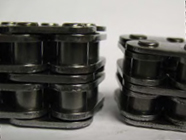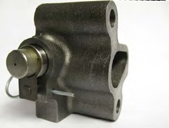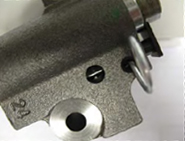|
Gerry Mulcahy (W78) emailed Call Sign recently asking for info on the symptoms and early warning signs of timing chain wear on the Ford-engined TX2 taxi. So we sent our ‘in-house’ engineer to investigate further, with a view to sharing the results with a wider audience, namely, our readers... First port of call was M&O, who suggested speaking to LTI in Coventry. After several unsuccessful telephone calls, we left a contact number and nature of the enquiry, but at the time of writing, our phone has not rung... So we spoke to an LTI dealership in Hertfordshire. They told us they fit the Ford timing chain and its’ associated parts that comes as a kit. Their spokesperson said that signs of early timing chain wear could be indicated by a difficulty in starting and uneven running when you did get going. The engine would tend to stall shortly after starting and sound extremely clattery, perhaps like a bag of nails until it settled into its rhythm. He would not be drawn on the ‘modified’ timing chain that we had heard was available. A little disappointed with the responses to our enquiry so far, we ventured south of the River, to taxi parts specialist JVBright in Southwark, run by Tony and Jamie Smith. Jamie is the more technically minded, but both guys are always really helpful and on this occasion they even went to the trouble of ordering in, especially for Call Sign’s benefit, the two types of genuine Ford timing chains and related components available for the TX2. They also shared their considerable combined knowledge of the subject with our reporter. They confirmed what we had previously been told about the difficult starting and of the chatter and rattle when running. They explained that the timing chain is kept under tension by a hydraulic timing chain tensioner that is activated by oil pressure when the engine is running. A tiny ratchet within the tensioner body keeps the timing chain taught and when the teeth on that ratchet wear, the |
Perfect Timing??? Call Sign looks at the TX2 timing chain...
|
|
|
timing chain is allowed too
much slack, hence the noises when running as the chain flaps
about to and fro. If the chain becomes too loose, there is the possibility that it will ‘jump’ a tooth on the sprocket wheel, causing further damage to the engine. There are two options to resolve the problem satisfactorily... First is to simply replace the original style of tensioner. Doing this involves stripping down the entire front end of the engine - no quick or easy task - and so it is prudent to also replace the timing chain at the same time, as it is almost certainly worn to some degree as well. The second alternative is to fit the heavier, strengthened timing chain and its dedicated tensioner, together with all the related components which are engineered to fit the wider timing chain and are therefore not compatible with the original timing chain etc. Call Sign was told that it is this type of chain, tensioner and associated parts that is fitted to the Transit engine, where the working cycle of a commercial vehicle is nearer that of a taxi ie stop/start motoring. Inevitably, this option is |
more expensive given
the additional engineering involved, but is likely to offer a
longer service life. ©Call Sign Magazine MM9 Photos: These are all taken from new
parts: 2. The body of the timing chain tensioner. The ‘nose’ (extended section) butts up against the timing chain under hydraulic pressure from the engine, keeping the chain taught. 3. The ‘hand grenade’ style wire pin locks the internal ratchet teeth (seen through the tiny aperture) as they wear over time. |
|
|
|
Powered by NetXPosure |
| Copyright 1997-2009 Dial-A-Cab Ltd, All rights reserved. |


